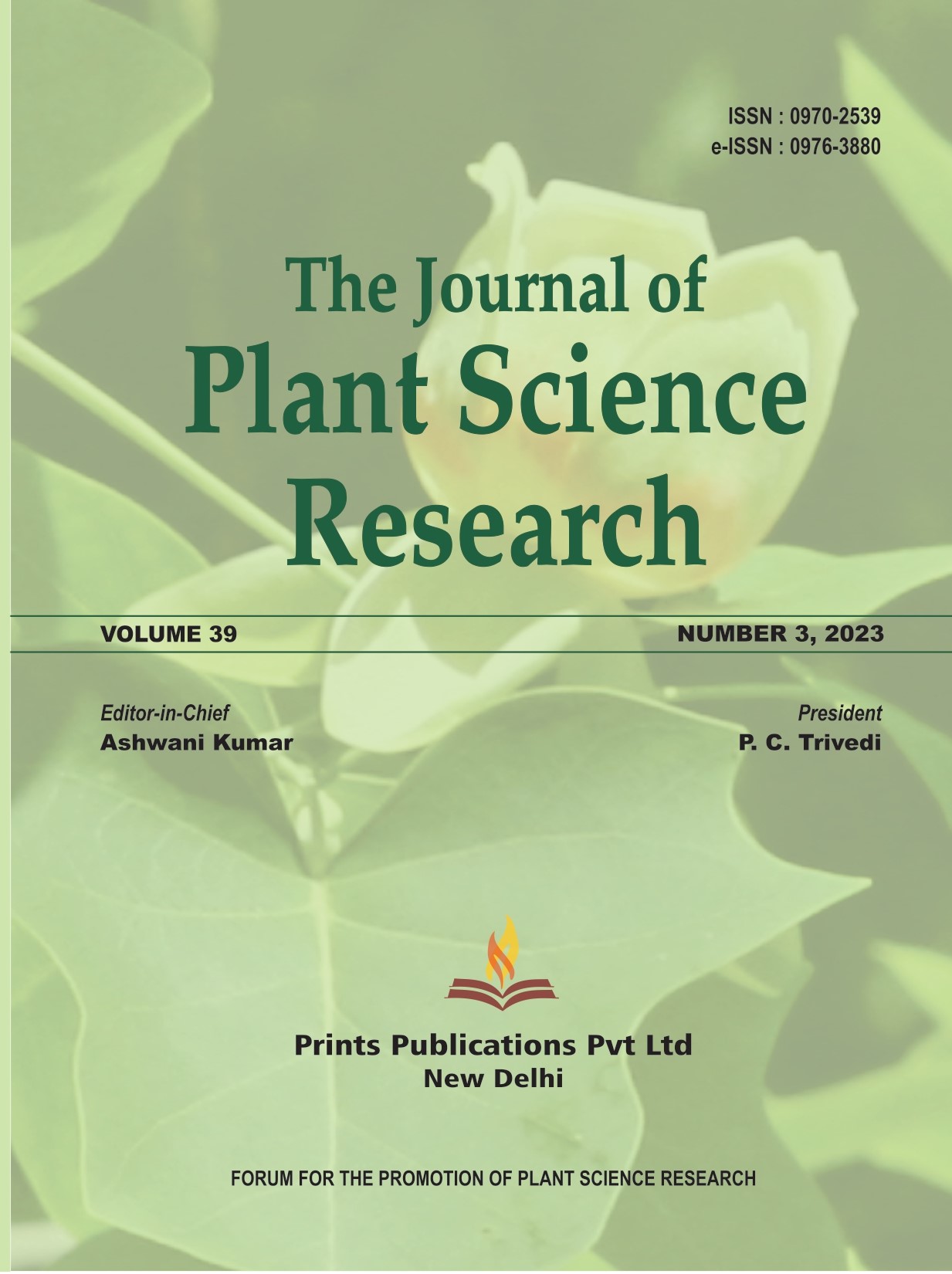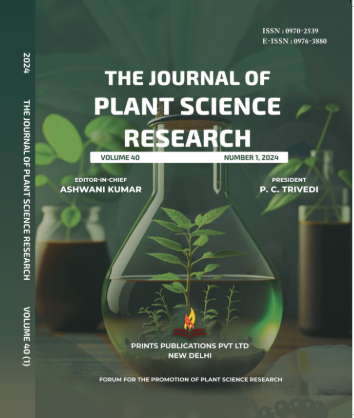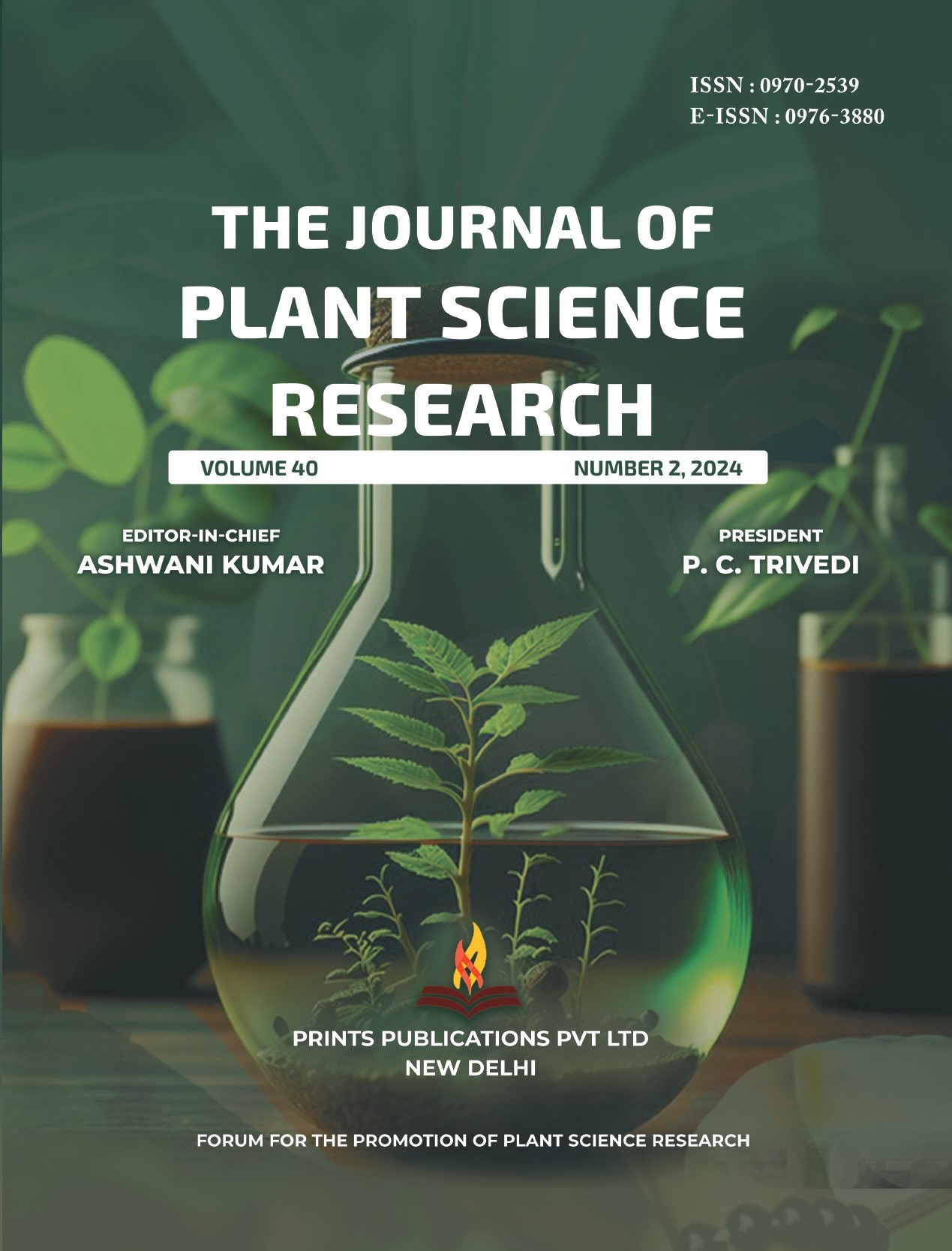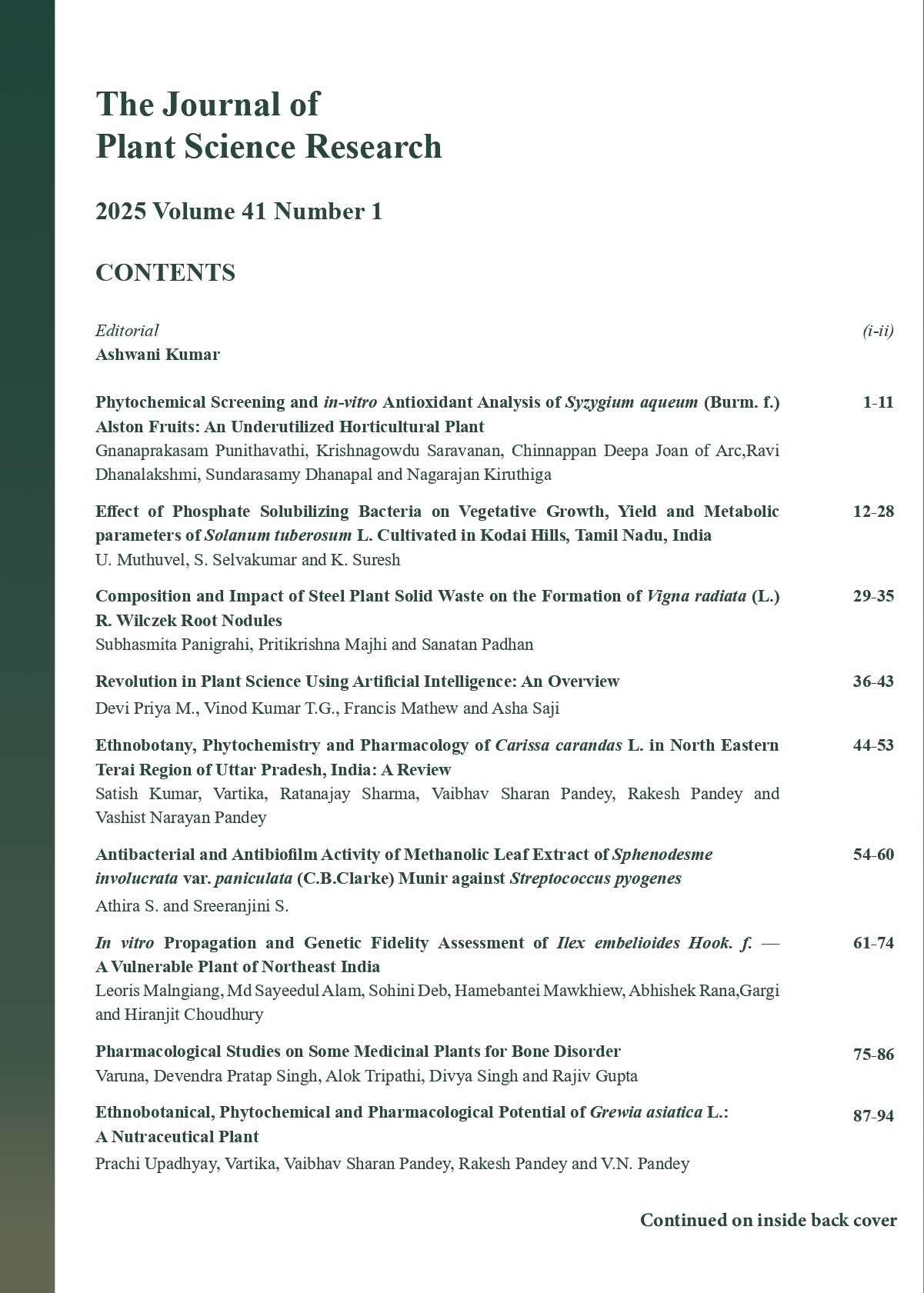The Journal of Plant Science Research - A UGC Care-Listed Journal
Published in Association with Forum For the Promotion of Plant Science Research
Current Volume: 41 (2025 )
ISSN: 0970-2539
e-ISSN: 0976-3880
Periodicity: Tri-annual
Month(s) of Publication: April, August & December
Subject: Botany
DOI: 10.32381/JPSR
Online Access is Free for Life Member
Genetic Variability, Correlation and Path Analysis in Wheat (Triticum Aestivum L.)
By : S A Kerkhi, S Mishra, M.L. Jakhar, Rajdeep Mundiyara
Page No: 39-47
Abstract
A study was conducted at Crop Research Centre of Sardar Vallabhbhai Patel University of Agriculture and Technology, Meerut (U. P.), during rabi 2010- 2011. Range, CV, heritability, genetic advance, correlation coefficient and path analysis were performed for yield and its contributing characters in 49 wheat genotypes. Analysis of variance for significant differences was among the all characters viz., days to 50 percent flowering, days to maturity, plant height, number of spikelets per spike, productive tillers per plant, ear length with awn, number of grains per spike, 1000 grain weight, and biological yield per plant, grain yield per plant, harvest index and gluten content. A broad range of variation was observed for plant height and biological yield per plant, number of grain per spike and test weight. Phenotypic variance value for most characters was closer than the corresponding genotypic variance value showing little environment effect on the expression of these characters. The estimated value of broad sense heritability was found between 45 percent (productive tillers per plant,) and 95 percent (gluten content). Heritability values were determined as 92 percent, 92 percent, 89 percent, 85 percent, 84 percent, 71 percent, 68 percent, and 67 percent, for plant height, days to maturity, test weight, days to 50 percent flowering, ear length with awn, harvest index, number of grains per spike, and grain yield per plant respectively. High heritability coupled with high genetic advance as percent over mean was observed for plant height, test weight, number of grain per spike and days to maturity suggesting selection for these traits would give good responses. The grain yield per plant exhibited highly significant and positive correlation with biological yield per plant, test weight, productive tillers per plant, and number of grains per spike, number of spikelets per spike, spike length with awn, plant height, and significant and positive correlation with harvest-index. It is suggested that these characters can be considered as selection criteria in improving the grain yield.
Authors :
Rajdeep Mundiyara, S A Kerkhi, M L Jakhar and S Mishra : Department of Genetics and Plant Breeding, Sardar Vallabh Bhai Patel University of Agriculture & Technology, Meerut- 250110 (U.P.) India






